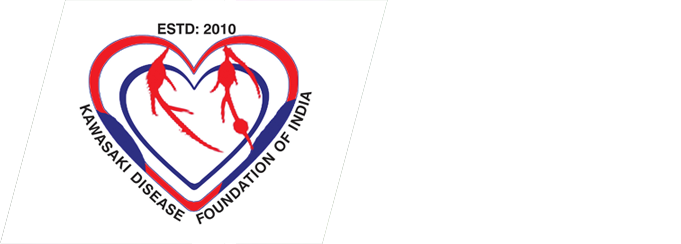| CRITERIA American heart Association criteria for diagnosing KD is given below FEVER persisting for at least 5 days PRINCIPAL CLINICAL FINDINGS 1. Bilateral conjunctiva injection (no exudate) 2. Acute cervical lymphadenopathy (unilateral/ bilateral /firm/ slightly tender with a diameter of 1.5cm) 3. Strawberry tongue, oropharyngeal erythema, redness and cracking of lips (ulcerative lesions not seen) 4. Polymorphic exanthema: - erythematous maculo papular rash, (sometimes morbilliform/scarlentiform) usually appears within 5 days of fever, starting with red palms and soles and moving to the trunk 5. Red, swollen, indurated hands and feet and later desquamation of hands and feet after 1-3 weeks Fever plus 4/5 Principal criteria or Fever plus 3/5 + Coronary artery dilatation can be considered for the diagnosis of Typical KD and Fever + 3/5 Principal criteria is in favor for atypical KD, but both typical and atypical need treatment |
GUIDELINES
 |
Diagnosis, Treatment, and Long-Term Management of Kawasaki Disease: A Statement for Health Professionals From the Committee on Rheumatic Fever, Endocarditis, and Kawasaki Disease, Council on Cardiovascular Disease in the Young, American Heart Association Jane W. Newburger, MD, MPH, Masato Takahashi, MD, Michael A. Gerber, MD, Michael H. Gewitz, MD, Lloyd Y. Tani, MD, Jane C. Burns, MD, Stanford T. Shulman, MD, Ann F. Bolger, MD, Patricia Ferrieri, MD, Robert S. Baltimore, MD, Walter R. Wilson, MD, Larry M. Baddour, MD, Matthew E. Levison, MD, Thomas J. Pallasch, DDS, Donald A. Falace, DMD, Kathryn A. Taubert, PhD |
ABSTRACT |
|






